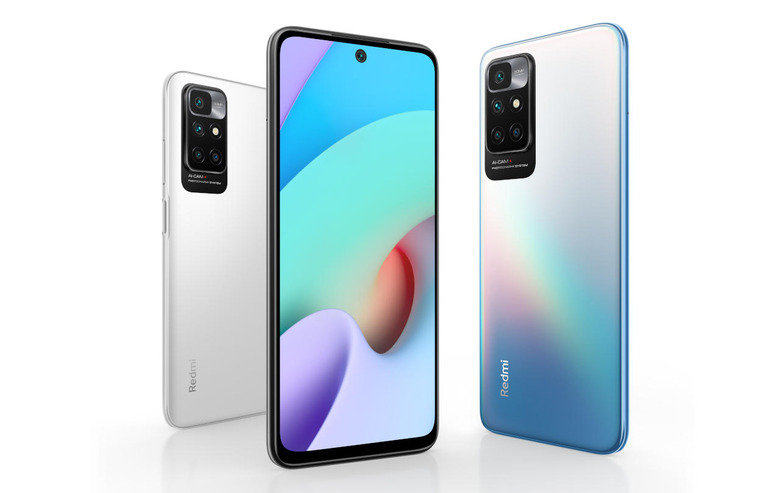Redmi 10 Doesn't Sound Like An Entry-Level Smartphone
The lines the divide smartphone tiers continue to blur as more powerful hardware components get cheaper and trickle down to lower tiers. It's easier to make comparisons when phones use the same brand of processors, but not so much when comparing apples and oranges. Take, for example, the latest Redmi 10 from the Xiaomi sub-brand. Billed as an entry-level smartphone, it definitely checks all the right boxes for something a little bit higher than what its price tag would suggest.
The MediaTek Helio G88 that powers the phone is actually a relatively new octa-core processor but one whose 2.0GHz speed isn't going to make waves. With 4GB or 6GB of RAM and up to 128GB of storage, however, the Redmi 10 makes the mark when it comes to mid-tier devices. Add a 6.5-inch 2400x1080 FHD+ screen with a 90Hz refresh rate on top, and you've got the makings of something beyond entry-level.
The Redmi 10's 50MP main shooter is one of its highlights, but, as we should know by now, megapixels don't always account for everything. It is joined by a paltry 8MP ultra-wide-angle camera, a 2MP macro camera, and a 2MP depth sensor. A telephoto camera would have been nice, but that would have undoubtedly raised the price higher.
There are, of course, some signs that the Redmi 10 is indeed below your average smartphone. Fast charging is actually limited to 18W only, for one, and the absence of 5G support. And then, there's the presence of the 3.5mm headphone jack that has unfortunately become a telltale sign of a non-premium phone these days.

Fortunately, the Redmi 10 does look more premium than it is inside, sporting design cues you'd often see on more expensive phones. Although it won't match HMD Global's Android Go Edition Nokia phones in terms of pricing, the Xiaomi Redmi 10 does start at $179 all the way up to $219 (6GB RAM, 128GB storage), making it a tempting option for those who can easily buy it.
